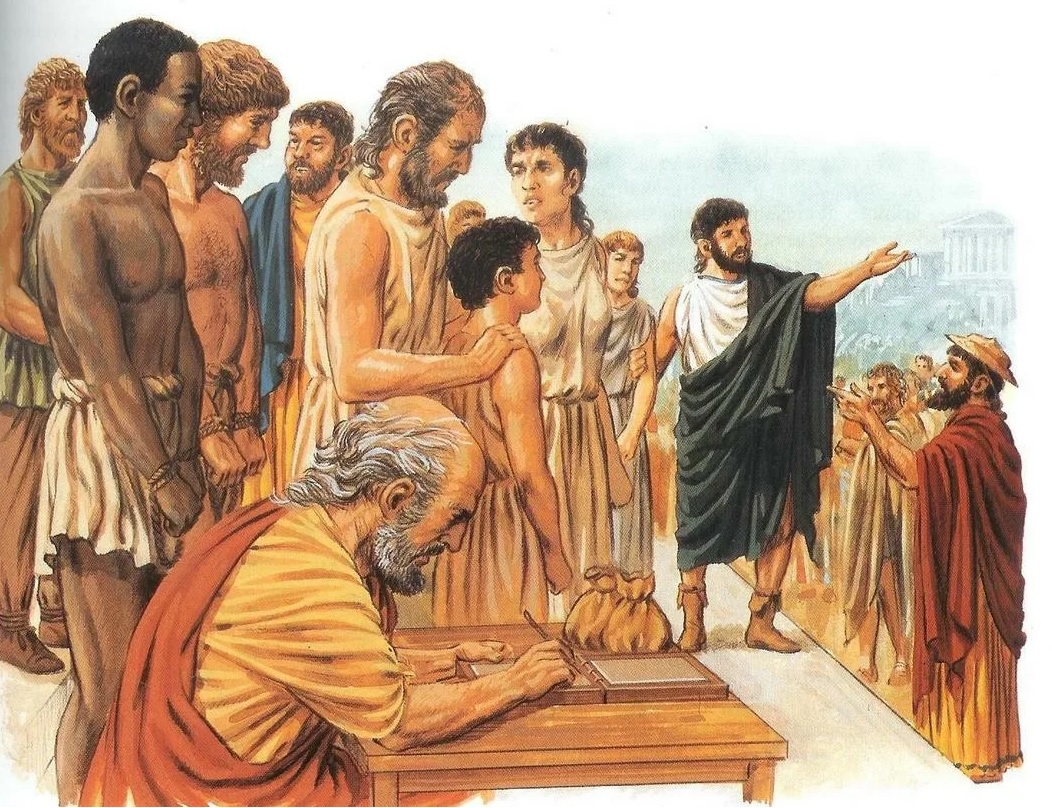Internal politics in Roman Republic
The formation of the Roman slave-owning republic, accompanied by internal political conflicts, took place against the backdrop of almost continuous struggles with external enemies. The Roman Senate, from the 5th to the 3rd centuries BCE, pursued a policy of military expansion throughout the Italian Peninsula. Such developments, in an environment of constant threats, had a strong influence on internal politics, the economy, military affairs, and other important state sectors.
Key topics in the internal politics of Roman Republic include:
Economy and social relations in the Roman Republic
During years of continuous expansionist and conquest wars, the number of slaves in the Roman state sharply increased. Their significant influx led to significant changes in the social and political life of the late Roman Republic. Slave labor took on a predominant role, with slaves becoming the primary producers of material goods. Free producers gradually began to be displaced from the Republic's labor market. A process of landlessness among the plebeians emerged, taking place against the backdrop of land concentration in the hands of large slaveholders.
Until the 2nd century BCE, small and medium landowners predominated in Italian agriculture. However, at the beginning of the late Republic, this category of Roman citizenship faced the threat of bankruptcy. Several factors contributed to this phenomenon. First and foremost, constant wars separated farmers from their declining farms. Another reason was the competition with large landowners, whose extensive estates employed numerous slaves, making it difficult for small or even medium landowners to compete.
In the Roman Republic of the 2nd century BCE, large estates began to replace subsistence farming by free producers. Slaveholding villas of medium size, with 10-20 slaves, oriented toward the market, became most widespread. Slaveholding agriculture became increasingly commercialized. Slavery also infiltrated into craftsmanship. The growth of the urban population created a market for agricultural and artisanal products. The need for money grew, leading to the development of usury.
 Slave trade
Slave trade
However, against the backdrop of progressive economic development, small and even some medium landowners were losing their holdings, becoming destitute and vagabonds. In a situation where unfree slave labor was the only profitable option, they had nowhere to apply their ability to work. A huge mass of landless citizens flooded into the capital, forming a layer of declassed lumpen-proletarians who survived on handouts from the wealthy, theft, and trading votes during magistrates' elections. The Roman state faced a complex task of protecting the interests of large landowners not only from the discontent of slaves but also from the Roman poor.
The conservatism of the Roman state apparatus also manifested itself in the matter of controlling the provinces, which were governed haphazardly and subjected to exploitation through the most brutal methods. By the beginning of the 1st century BCE, Rome controlled ten provinces, each with different rights and lacking a unified and well-organized system of governance. Most of them were dependent territories paying various taxes. The state considered the provinces as "estates of the Roman people." There were no laws defining the jurisdiction of provincial governors, who enjoyed absolute and unchecked power. This not only put the majority of impoverished provincials in opposition to Rome but also the slaveholders of the provinces, whose interests were hardly considered by Roman authorities.
The previous political forms reflected the interests of specific layers of Roman slaveholders: the nobility and senatorial oligarchy who clung tightly to the old order. The equestrian class also sought power, especially representatives from its commercial and artisanal layers. The broad population of the provinces was also dissatisfied with their situation. Furthermore, the corruption and rebellious tendencies of the lumpen-proletarian layers of Roman citizenship could disrupt the unstable balance of social and political forces. Slaves could also have their say, as a few outbreaks of unrest among them had already occurred in the second half of the 2nd century BCE (such as Slave Revolt in Sicily). All of this indicated that in the 2nd century BCE, the Roman state was beginning to experience symptoms of crisis.
 Roman coin of the 2nd century BC.
Roman coin of the 2nd century BC.
Related topics
Roman Republic, Slave Revolt in Sicily, Unification of Italy under Roman rule


